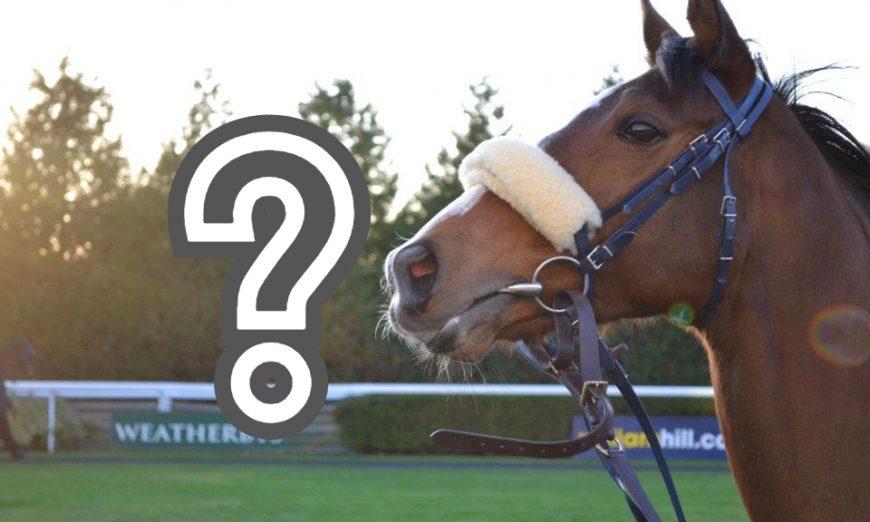People often ask me, where does the profit come from when you’re trading? How does it magically appear, who is actually losing if I’m winning?
To answer that question. I’m going to follow a trade I filmed a few years ago. I came across it recently and it is an excellent example of this. This trade illustrates in the way profits are achieved when you are Betfair trading and I hope this can help you understand a little better, as I often get questions about the ins and outs of how profits are generated.
Where do you start?
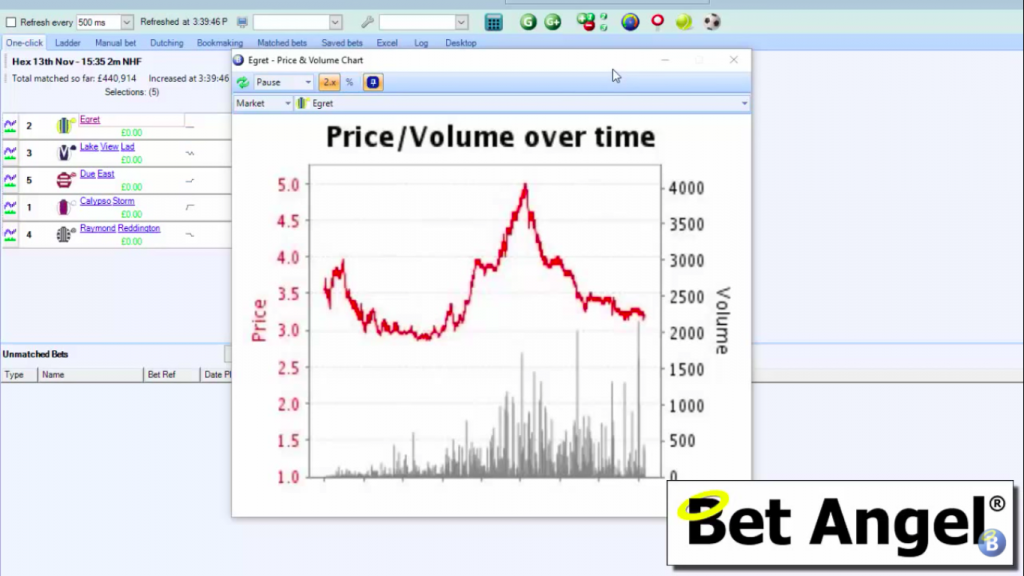
Above is the chart of the favourite on this particular race.
The chart is showing you that the favourite started at 3.50 when the market opened early. You see this changed significantly as it got closer to the start of the race which is shown on the graph as about two-thirds of the way across the chart, which would have been the last 10 or 15 minutes before the race begins.
So up until the last 10 to 15 minutes, effectively everybody thought this horse had a 1 in 3 chance of winning. If you want to calculate out the probabilities, you have a number of ways of doing that. I’ll go through the calculation to show you how the graph and the odds correlate to the chance of winning which will help you reinforce what I am about to explain.
So if the odds on the horse are at 3 and we calculate 1 divided by 3. By doing that we get: –
1 ➗ 3 = 0.333333
Here you can see it comes up with 0.33 chance so if we convert that to a percentage, it’s saying that the horse has a 33% chance of winning the race.
So when the price was backed in the early market, which went down to 3. Everybody said, the chance of this horse winning is 33%.
A strange shift in market…
But then you can see we had this dramatic drift in the market!
I was watching this market and the activity of this course and there wasn’t anything particularly stunning that caused the price in this horse to go out dramatically. When you see things like this, you sort of think, well, that’s a bit crazy!
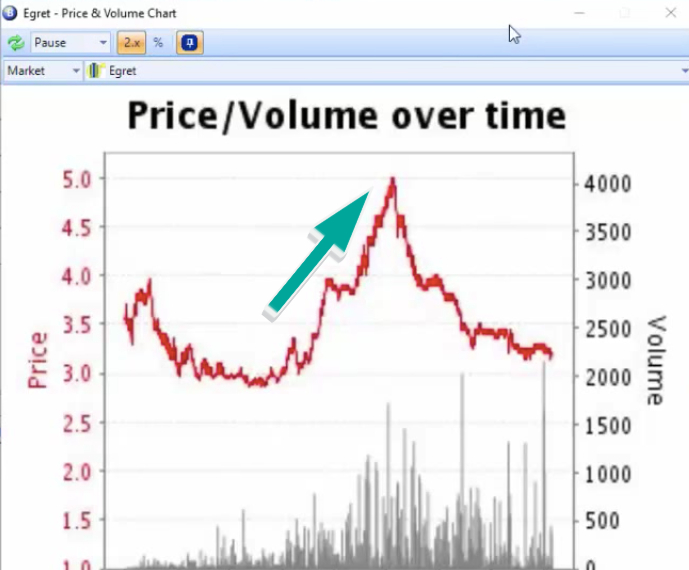
So if we if we do the same calculation with the new price:
1 ➗ 5 = 0.2
You can see it said there was only 0.2 or a 20% (if you multiply that by 100 to get the %) chance of this horse winning the race. Basically the odds of this horse or the chance of this horse winning this race shifted by 13.3% in this very short period of time.
For this to happen, you could have possibly thought that something mysterious had happened to the horse, it almost doesn’t make any sense!

But actually, this presents you with two opportunities in terms of where the market is.
Now for you to lay this horse at 3.00, a liability would have been significantly lower than if we laid this horse at 5.00. In fact, now there’s a massive value gap of 13.3%.
It makes no sense that the market should go, ‘oh, this horse has got quite a good chance. Wait, no, it doesn’t. Well, actually, yes!’ It just doesn’t make any sense whatsoever. One of these prices has to be wrong!
How is the chart showing?
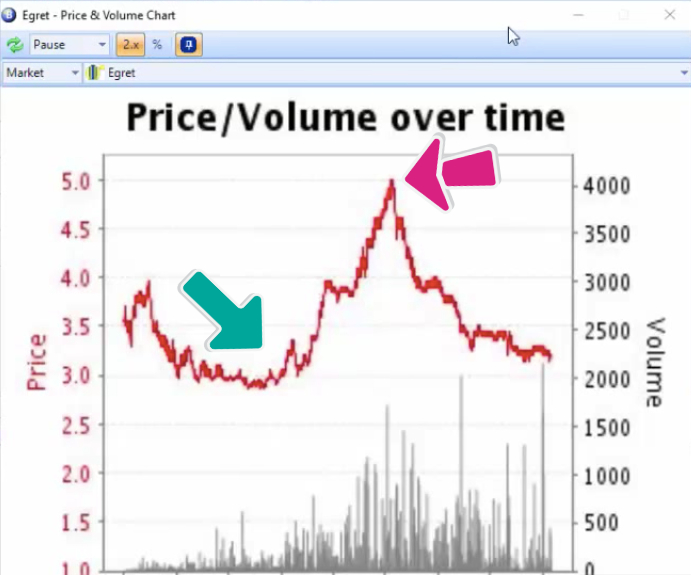
When looking at this chart it is easy to conclude that there must have been something wrong with the market’s judgement and it could have been driven by any number of factors. You can see their indecisiveness through the trough in the chart (which the green arrow points to) or the peak (which the pink arrow points to).
The fact is, one of these two things (the trough or the peak) has to be wrong. By trading this rampant indecision you could make a profit, either from trying to pick off value at either extreme or by trading it to profit regardless of who goes on to win the race.
Profting regardless of who goes on to win is, obviously, a fantastic benefit of betting exchanges!
So how do we take advantage of this?
Let’s say you saw the price at 3 and you thought, well, I’m not going to back it at 3.00, but I could back it at 5.00. You can actually put your order in the market and wait for the price to reach 5.00 where it will get taken and you would have got fantastic value. You will make money in the long term if you can back something at 5.00 that should be available at 3.00.
But in fact, you could have traded out of that initial position at some point in the market and you could have still guaranteed yourself a profit, even if you weren’t looking for a particular strategy, making a nice trade. However, what I’m trying to illustrate to you here is that one of these two points definitely has to have been wrong.
You can see that there were a number of opportunities gere to be able to actively trade that or to get value from your bet. This is something you can’t do that with a traditional bookmaker and something you can only really do on a betting exchange.
When you look at this, it also explains where the money comes from.
Let us say that there was £100,000 bet on this horse – we will simplify this dramatically – but let’s say £50,000 was bet at 3 and £50,000 was bet at 5, then obviously there’s a 13% difference of £50,000.
So let’s do the Math:
£50,000 ✖ 0.13 = £6,500
So we’ve got a £6,500 differential between those two points, effectively you’re saying that there’s been a 13% shift in the book at that particular point in time.
How does this show where profit comes from?
Now this is fundamentally where the profit comes from when you’re trading, the profit comes from other people’s indecision, people’s inability to understand what price they should be backing out, or perhaps they’ve taken a worse price than they could have got a few minutes later.
The wonderful thing about pursuing a strategy that exploits this is that whether you were backing or laying, you would have backed up at the peak or laid at the trough, you would have got a much better price than the average price over the course of this entire market.
If you were trading this market, this would have been a nice opportunity for you.
It’s worth noting that it’s basically impossible for a market to do two things:
- It’s impossible for the price of a horse to drift endlessly in a market…
- It’s impossible for the price supposed to come in endlessly…
Now that’s where the trading opportunity comes from, because very often it will revert to a more sensible price. So whatever the reason behind the drift and then the dramatic collapse back in price, that’s where opportunity comes from.
If you’re a traditional backer in the market, you can always ask for price that doesn’t exist because you will get matched at that higher price. If you’re a layer, you’ve got the opportunity to lay at low prices even if the price is coming in dramatically, you’ll probably get an opportunity to grab a decent price.
Additionally, if you’re trading, the indecision within this market presents the opportunity. That’s where the money is in the market.
Where is the best place to get a profit?
The way I would summarise trading is you’re effectively selling uncertainty and volatility and this is important to remember.
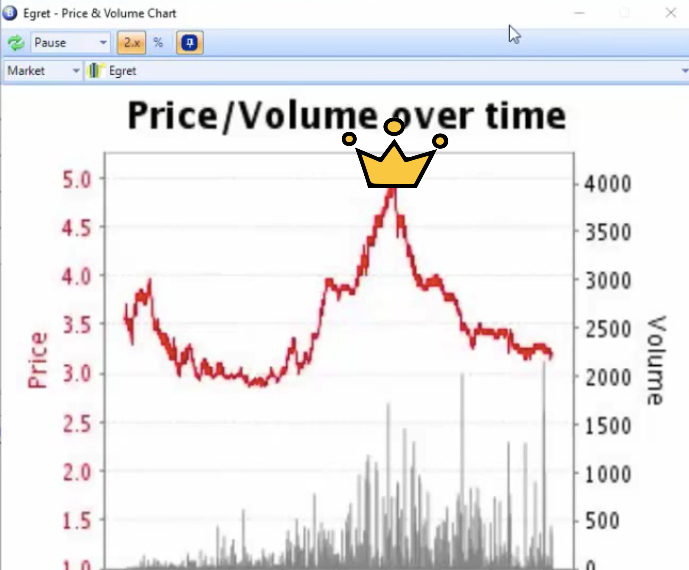
The perfect point in this market would have been to get in at the top of the peak, but it didn’t matter if you didn’t get in there, you could have got in at some other point within the market and waited for it to come back down to more reasonable odds.
Why would you do that?
We know that the market can’t permanently go in one direction or the other and that the market tends to meander around. If people were laying this horse at 3 was that was fantastic, but laying it at 5 isn’t such a good decision. So eventually people will stop laying it and the price will reverse.
Relying on indecisiveness for profit
The same situation occurs on backers because if they’re backing it at 5 then that’s a great price. Obviously, as the price comes down (shown through the pink arrow), then backers will start to weaken within the market when they realise that they’re just not getting as good a price as perhaps they had wished for.

Looking through those scenarios and explaining where the money comes from when you’re trading it, should have provided you with a better understanding as to where profit comes from.
Fundamentally, it’s through volatility that profits are made. People either back or lay at prices that contrast dramatically from the average price, allowing for traders to find these great opportunities for profit.
It’s here where the money comes from if you’ve made a profit while trading and better than that. It’s something you can quantify.

